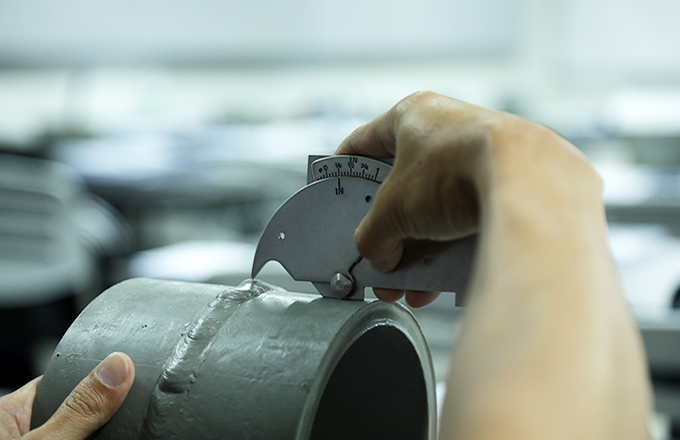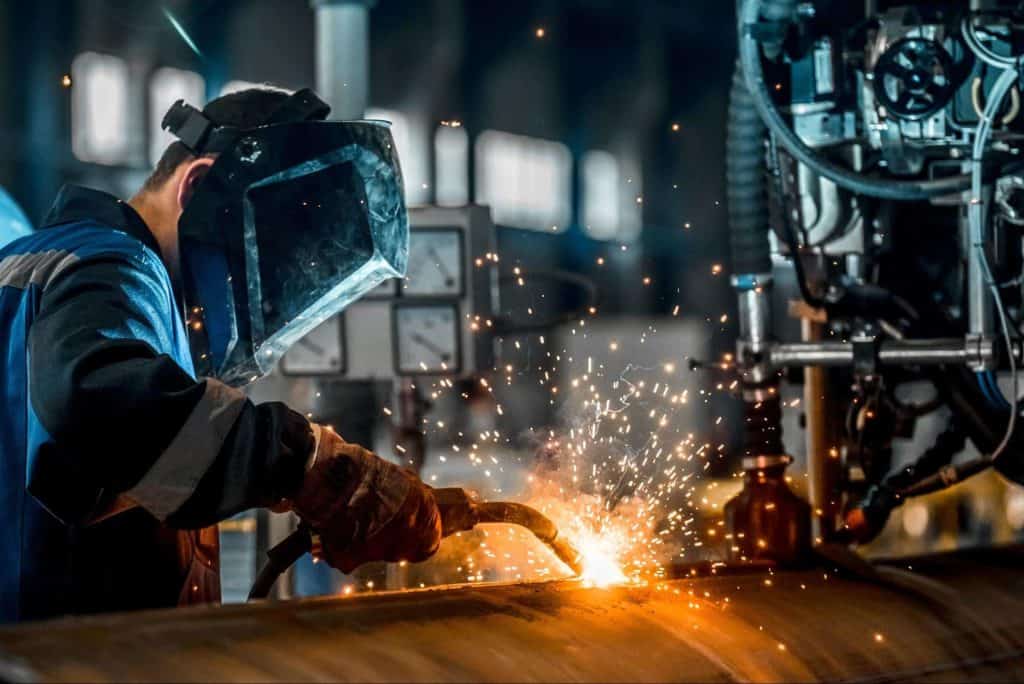Vital Tips for Successful Welding Inspection Madison Services
Vital Tips for Successful Welding Inspection Madison Services
Blog Article
Discovering Advanced Equipment and Methods for Accurate Welding Inspection
In the world of welding assessment, the pursuit of precision and dependability is vital, spurring the advancement of sophisticated devices and methodologies. Laser scanning technologies and automatic evaluation systems, geared up with artificial knowledge, are redefining the landscape by reducing human error and boosting safety measures.
Ultrasonic Checking Developments
Ultrasonic screening technologies frequently stand for the leading edge of innovations in welding inspection modern technologies. These advancements have actually significantly boosted the ability to detect and evaluate stoppages within bonded structures, ensuring enhanced integrity and safety and security.

Furthermore, improvements in software program formulas for data analysis have actually improved the accuracy of defect discovery and sizing. Automated ultrasonic testing systems currently supply high-resolution imaging, enabling comprehensive analyses of weld quality. These systems are usually integrated with advanced visualization tools, which assist in the analysis of results.
Radiographic Examination Strategies
While ultrasonic testing advancements have actually set a high requirement in non-destructive assessment, radiographic inspection methods continue to play an important duty in welding inspection by offering distinct insights right into product integrity. Radiographic screening (RT) utilizes using X-rays or gamma rays to penetrate materials, producing a radiograph that visually stands for the internal framework of a weld. This imaging capability is important for detecting subsurface problems such as porosity, incorporations, and cracks that might not be visible with surface area inspections.
The process includes placing a radiation source on one side of the weld and a detector on the opposite side. Variants in material density and density affect the attenuation of the rays, producing a contrasting image that specifically marks imperfections. RT is especially useful for inspecting intricate geometries and thick areas where various other approaches might fail.
In spite of its efficiency, radiographic evaluation has to be conducted with rigorous adherence to security methods due to the dangerous nature of ionizing radiation. In addition, the analysis of radiographs needs knowledgeable personnel, as the high quality of the analysis directly impacts the integrity of the inspection. As a result, ongoing improvements in electronic radiography are improving image quality and analysis efficiency, reinforcing RT's essential duty in ensuring weld top quality.
Laser Scanning Advances
Welcoming laser scanning technology in welding examination has transformed the analysis of weld high quality and honesty. This sophisticated method uses a non-contact, high-resolution methods of catching thorough 3D information of weld surfaces. Unlike conventional inspection methods, laser scanning gives fast data procurement, dramatically boosting the effectiveness and accuracy of weld assessments. The modern technology employs laser beams to produce exact 3D models, which are crucial for in-depth evaluation of weld dimensions, surface area abnormalities, and prospective defects.
Laser scanning advancements have brought about considerable improvements in detecting and identifying surface flaws such as porosity, lack of combination, and damages. The high-resolution information makes it possible for assessors to do thorough analyses, making certain that welds fulfill rigorous sector criteria. Additionally, this method sustains the growth of digital documents, helping with long-lasting quality control and traceability.
In addition, laser scanning modern technology integrates flawlessly with software program options made for automated problem discovery and analysis. The resultant data can be quickly shared and evaluated, advertising collective decision-making procedures. As industries continue to require greater requirements for weld quality, laser scanning continues to be at the leading edge, providing unrivaled precision and efficiency in welding assessment.
Automated Examination Systems

Automated inspection systems provide the advantage of consistency, eliminating human mistake and subjectivity from the examination process. They are made to run in various environments, from production floors to remote field websites, guaranteeing thorough protection. Welding Inspection Madison. These systems can be programmed to stick to you could try here particular welding requirements and criteria, providing in-depth records and paperwork for quality assurance purposes
In addition, the integration of cloud-based systems helps with the storage and evaluation of huge quantities of evaluation information. This allows pattern evaluation and predictive upkeep, allowing manufacturers to resolve possible issues prior to they intensify. The fostering of automatic examination systems is a critical action in the direction of improving the integrity and efficiency of welding processes in commercial applications.
Enhancing Safety and Efficiency
A significant element of boosting safety and effectiveness in welding assessment depends on the assimilation of innovative modern technologies that streamline procedures and mitigate risks. The fostering of advanced non-destructive testing (NDT) approaches, such as ultrasonic screening, phased variety ultrasonic screening (PAUT), and radiographic screening, plays a crucial duty in making certain architectural stability without compromising the security of the employees involved. These strategies allow for detailed inspections with marginal downtime, lowering possible threats related to traditional methods.
Moreover, the execution of real-time data analytics and equipment discovering formulas has actually transformed the method examination information is interpreted. By employing anticipating analytics, possible flaws can be identified before they manifest into essential failures, making certain prompt treatments and maintenance. More about the author This positive technique significantly improves operational effectiveness and safety in welding processes.
In addition, remote examination technologies, including drones and robot crawlers equipped with high-resolution cams, enable assessors to analyze hard-to-reach locations without subjecting them to harmful conditions. This not just boosts assessment precision yet additionally decreases human risk. By leveraging these innovative devices and methods, sectors can achieve greater safety and security standards and functional efficiency, inevitably bring about more sustainable and trustworthy welding inspection methods.
Final Thought
The integration of advanced tools and approaches in welding examination substantially improves flaw discovery and ensures architectural stability. Welding Inspection Madison. Developments such as phased range ultrasonic screening, digital radiography, and laser scanning improve problem characterization, while More about the author automated inspection systems and AI minimize human mistake. Remote technologies assist in risk-free evaluations in harmful settings, promoting a positive upkeep technique. These improvements not only increase inspection performance but additionally contribute to improved safety and high quality guarantee in commercial welding applications.

Ultrasonic testing innovations regularly represent the center of advancements in welding examination technologies.While ultrasonic screening technologies have actually established a high requirement in non-destructive assessment, radiographic inspection methods continue to play an important function in welding assessment by offering one-of-a-kind insights right into product honesty.Welcoming laser scanning modern technology in welding evaluation has actually changed the assessment of weld top quality and integrity. As industries continue to require higher criteria for weld quality, laser scanning stays at the forefront, providing unmatched precision and performance in welding assessment.
Automated assessment systems use the benefit of consistency, getting rid of human error and subjectivity from the examination process.
Report this page